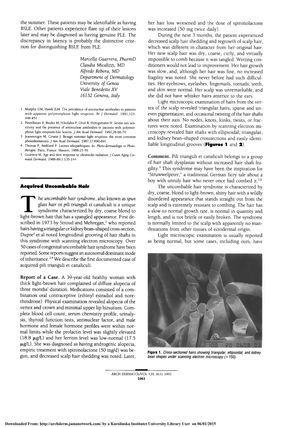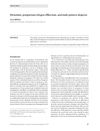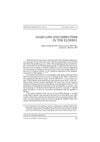Acquired Uncombable Hair Syndrome in a 39-Year-Old Woman
August 1993
in “
Archives of Dermatology
”

TLDR A woman's hair changed to a dry, tangled texture that's hard to comb after treatment with spironolactone, suggesting the medication might cause such hair changes.
The document reports the first documented case of acquired uncombable hair syndrome, also known as pili trianguli et canaliculi, in a 39-year-old woman who initially presented with diffuse alopecia and was treated with spironolactone. Over time, her hair regrew with a different texture, becoming dry, coarse, curly, and tangled, which was resistant to combing. Light microscopic and scanning electron microscopy examinations of her hair revealed triangular, ellipsoidal, and kidney bean-shaped cross-sections with longitudinal grooves, characteristic of uncombable hair syndrome. This condition is typically congenital with an autosomal dominant inheritance pattern and usually presents in childhood, but this case suggests that structural hair abnormalities should be considered in adults with hair disorders as well. The syndrome is characterized by shiny, disordered hair that stands out from the scalp and is not brittle or easily broken, with no other ectodermal tissue manifestations. The patient's acquired condition appeared following treatment with spironolactone, indicating a potential link between the medication and the structural hair changes.

